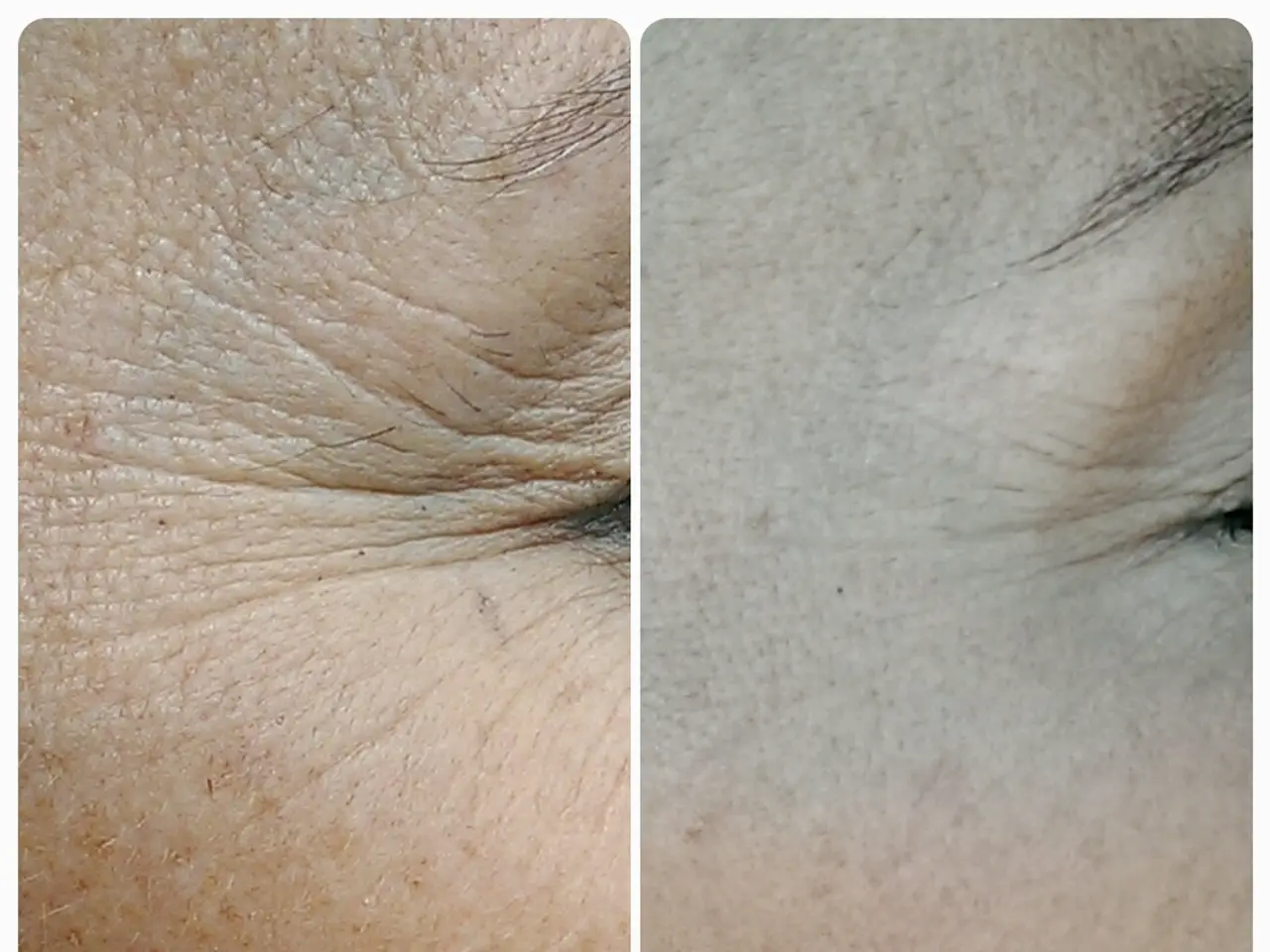Intrinsic Balancing Capabilities of Skin: The Significance of Buffering Potential and pH Restoration Speed
In the quest for healthy and radiant skin, it's essential to support our skin's natural buffering and recovery mechanisms, particularly for those with atopic changes, sensitive skin, or undergoing topical pharmacologic treatments.
The skin's buffering capacity and pH regulation system are influenced by a variety of factors, including the composition of epidermal components, sweat secretion, stratum corneum thickness, and skin type. These factors determine the skin's ability to rapidly neutralize pH fluctuations and maintain its normal acidic pH, typically between 4 and 6.
Key factors affecting skin buffering capacity and pH regulation include keratin proteins and free amino acids, stratum corneum thickness, sweat composition and secretion, epidermal lipids and lipid-processing enzymes, and skin type. Darker skin, for instance, tends to have a lower surface pH, enhanced lipid content, faster barrier recovery, and stronger buffering capacity compared to lighter skin.
These factors play a crucial role in maintaining skin health by preserving the acidic pH, which protects against pathogen colonization and infection. They also support barrier integrity, prevent excessive moisture loss and entry of irritants, and influence hydration balance. Furthermore, they support the skin's intrinsic recovery mechanisms to minimize damage from environmental stressors.
Disruption in buffering capacity or pH regulation can lead to compromised barrier function, increased susceptibility to infections, irritation, inflammation, and delayed skin repair, adversely affecting skin health and appearance.
The skin demonstrates an intrinsic buffering system and recovery mechanisms that enable it to restore its original, healthy condition. However, exposure to alkaline cleansers, environmental pollutants, UV radiation, and mechanical friction can disrupt the delicate balance of the stratum corneum's pH.
When the stratum corneum is damaged, a multi-phase self-repair process is triggered, involving the activation of an emergency repair system. This system detects excessive transepidermal water loss and releases lipid precursors into the stratum corneum. These lipid precursors are converted into physiological lipids such as ceramides, which repair the damaged intercellular lipid matrix.
In studies, acidic lotions showed faster trends in microbiota rebalancing compared to alkaline lotions after barrier disruption. A pH 4 glycolate buffer can also reduce the rise in skin pH associated with barrier damage, causing only mild increases in epidermal thickness and inflammation compared to water.
In summary, effective skin pH regulation and buffering depend on a complex interplay of biological and biochemical factors that maintain the skin's natural acidic environment, crucial for skin protection and health. It's essential to choose skincare products that align with our skin's pH requirements to maintain a healthy and radiant complexion.
Engaging in fitness-and-exercise and following a proper health-and-wellness routine can indirectly contribute to maintaining skin health, as they reduce stress and boost circulation, supporting the skin's natural recovery mechanisms. Additionally, implementing science-backed skin-care regimens that consider the skin's optimal pH balance can help preserve the skin's barrier function and keep it healthy and vibrant.




